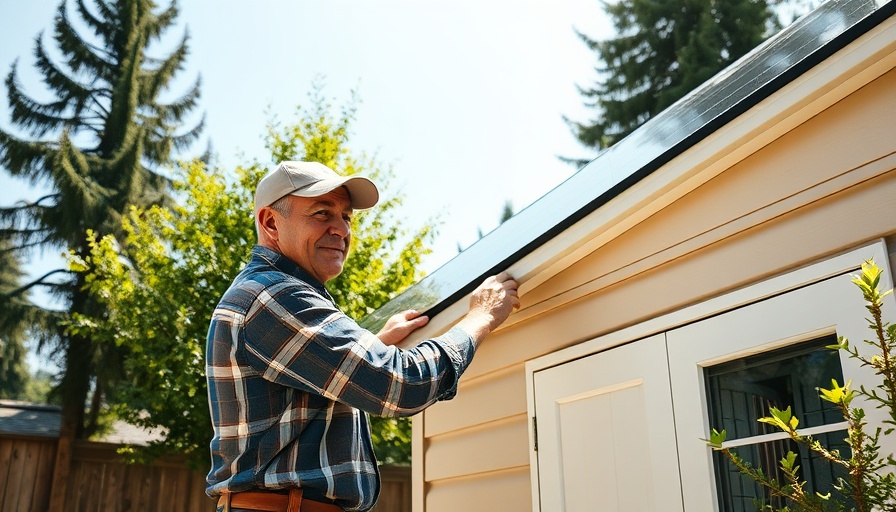
Unveiling the Teflon Tapes Myth: What Homeowners Need to Know
The world of DIY home improvement often brings with it novelties that promise easier and better solutions to common household problems. A recent viral video discussion led to revelations about how Teflon tape, the go-to product for many DIY enthusiasts, has typically been applied incorrectly. A significant portion of homeowners could be using Teflon tape inefficiently, potentially leading to leaks and costly repairs. This article explores the findings from the video, "I Tested This Teflon Tape Hack – Shocking Results!" and discusses the implications every homeowner should consider.
In 'I Tested This Teflon Tape Hack – Shocking Results!', the video reveals essential insights into Teflon tape application that we analyze extensively.
Rethinking Teflon Tape: The Experiment and Its Findings
In the viral video that has captured the attention of over 40 million viewers, a method was introduced where Teflon tape is rolled into a string and then pushed into the grooves of the fitting. This technique contrasts sharply with the conventional wrapping method that most homeowners are accustomed to. The video's host tested four different sealing methods: the new Teflon hack, standard Teflon tape, premium tape known as "Blue Monster," and a combination of Teflon tape with thread sealant (often referred to as pipe dope).
The various methods were put under pressure for 10 minutes to test their efficacy. The results were eye-opening. While the DIY hack did show some promise, it also required significantly more time to apply, raising questions about its practicality for the average homeowner seeking quick fixes.
What Homeowners Should Consider: Practical Insights
For homeowners, especially those ages 40 to 50 with varying levels of DIY experience, understanding these methods can save time, stress, and potential damage to property. Key insights from the experiment illustrated that:
- Teflon Tape with Pipe Dope: This combination emerged as the most effective method, showing no leaks after the test. It provides a strong seal while preventing friction when threading fittings together.
- Standard Teflon Tape: While commonly used, the results indicated it had a higher likelihood of leaking, especially when not applied until it was adequately wrapped.
- Premium Options: Products like "Blue Monster" are designed to offer improved sealing but may still require the careful application practices outlined in the video.
Embracing the Change: How to Fix Common Plumbing Issues
Plumbing problems can often occur at the most inconvenient times, causing frustration and sometimes even damage to homes. When it comes to managing these issues, the newly highlighted methods offer practical insights into saving time and resources. Homeowners experiencing leaks should consider going beyond simple Teflon tape. Instead, they could adopt a combination of tape and a thread sealant, ensuring a tight seal that stands up to pressure.
Future Trends in DIY Home Repairs: Informed Choices Lead to Better Outcomes
The overflow of DIY videos and tips available today can lead to confusion among homeowners. As the conversation around effective sealing methods continues to grow, the importance of educational resources cannot be overstated. Homeowners can avoid mishaps by turning to professional guides, quality materials, and incorporating data-driven methods into their home improvement routines.
Ultimately, by equipping themselves with the latest techniques and products, homeowners can embrace their DIY projects with confidence. Whether fixing a leak in the bathroom or making minor upgrades, every informed decision leads to better outcomes.
In conclusion, if you're ready to tackle that upcoming plumbing project or simply want to enhance your home maintenance skills, implementing these insights can make all the difference. For more guidance, be sure to explore resources that offer comprehensive DIY tips, checklists, and expert advice tailored for homeowners.
 Add Row
Add Row  Add
Add 




Write A Comment